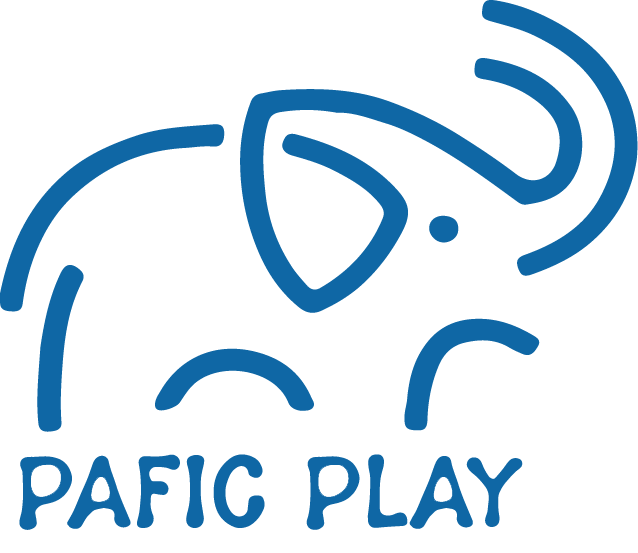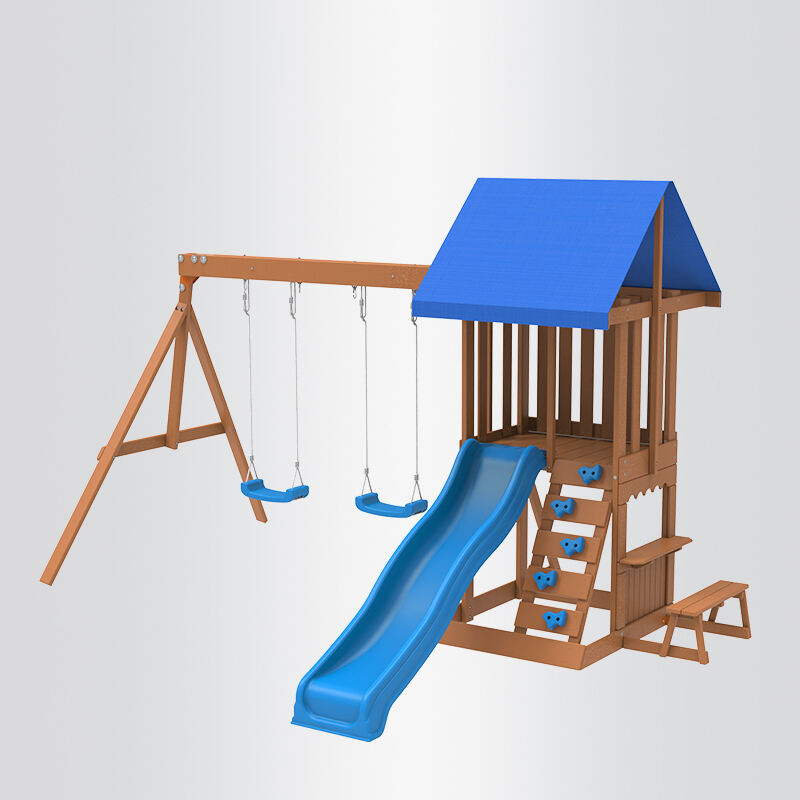Global Playground Safety Standards Demystified
Playground safety standards matter a lot when it comes to keeping kids safe during their outdoor adventures worldwide. When people get familiar with these guidelines, they start seeing how important things like proper surfacing materials and equipment spacing really are for preventing injuries. Take a look at what organizations such as ASTM International and the Consumer Product Safety Commission have been up to, and it becomes clear why playground design has changed so much over recent decades. These groups keep updating rules based on real-world incidents and research findings, which means playgrounds today are generally safer places where children can explore creatively without parents constantly worrying about potential dangers lurking around every corner.
ASTM F1487: The Benchmark for Public Playgrounds
ASTM F1487, created by the American Society for Testing and Materials, lays out important safety guidelines for public playground equipment across the country. Basically, this standard helps ensure kids can play safely without getting hurt. Following these rules matters because they cut down on accidents that happen at playgrounds all the time. Take surface materials for example. The standard really focuses on how well different surfaces absorb impacts after falls, which is one of the biggest concerns for playground safety. Studies show playgrounds that follow ASTM F1487 have way fewer injuries reported compared to those that don't. When communities stick to these standards, both children stay safer and parents feel better about letting their kids play outside. Local governments also get peace of mind knowing their parks meet recognized safety benchmarks.
CPSC Guidelines: Preventing Common Playground Hazards
The Consumer Product Safety Commission, or CPSC, is basically responsible for setting standards that make playgrounds safer places for kids. They spend a lot of time looking at all sorts of dangers we see in playgrounds every day - things like kids getting stuck between components, falling from heights, or cutting themselves on rough surfaces. The guidelines they put out give pretty detailed advice on how playgrounds should be built and maintained so these problems don't happen so often. Take their recommendations about equipment design for example. They want manufacturers to build things with smooth, rounded corners instead of sharp ones, and ensure there's enough space between parts so little fingers and heads won't get trapped. Research shows when communities follow these rules, there are way fewer injuries reported at local parks. This matters because safe playgrounds aren't just about avoiding injuries; they actually help create better spaces where kids feel free to climb, swing, and just be kids without parents constantly worried about potential dangers lurking around every corner.
EN 1176: Europeâs Approach to Play Equipment Safety
EN 1176 stands as Europe's main set of rules for making sure playground equipment stays safe, and most countries on the continent have jumped on board with these guidelines. The standard actually lays out pretty detailed specs for how equipment should be designed and tested so kids stay protected when they play. Things like how strong and steady the structures need to be are covered in depth, since after all, playgrounds get used nonstop by little ones who can be pretty rough on things sometimes. When looking at global standards, EN 1176 tends to go further than many others do. It covers almost every possible safety angle that could come up, which makes life easier for companies trying to manufacture compliant products. What's interesting is that this comprehensive approach doesn't just keep children safe, it actually encourages manufacturers to think creatively about their designs while still sticking to those strict safety rules. At the end of the day, these European standards show a real dedication to creating spaces where kids can explore freely without parents constantly worrying about potential dangers lurking around every corner.
Designing Custom Playgrounds for Diverse Age Groups
Toddler Zones: Low-Height Structures and Enclosed Spaces
Designing playgrounds that keep toddlers safe but still let them have fun means including certain important features like short climbing structures and walled-in play areas. The shorter structures really matter because they cut down on fall risks for little ones who haven't quite mastered walking or balancing yet. Play areas that are enclosed create boundaries where toddlers can roam around without getting bumped into by bigger kids all the time. Most playground designers build in good visibility spots so parents can watch what's happening without having to crowd the actual play space. We've seen time and again how these thoughtful layouts help babies reach those big developmental stages faster, improving not just how they move around but also how their brains develop through exploration and interaction with their surroundings.
School-Age Challenges: Developing Motor Skills Safely
School playgrounds need to help kids develop both big body movements and smaller hand-eye coordination skills. The way to do this? Add things like climbing frames, balance beams, and those fun rope bridges that kids love crossing. These kinds of structures push kids physically while getting them moving actively instead of sitting around. Safety matters too obviously. Non slip surfaces and enough space between different pieces of equipment can really cut down on injuries when kids are playing rough. Studies show playgrounds built with both safety and developmental goals work wonders for how kids grow physically. Many schools running custom programs before and after class report noticeable gains in students' coordination and ability to move quickly without tripping over their own feet.
Inclusive Play Elements for Mixed-Age Communities
Making sure playgrounds welcome everyone matters a lot when it comes to getting kids of all ages to interact. When designing these spaces inclusively, the goal is simple really - create places where children regardless of their abilities or age can actually play side by side. The equipment makes a big difference too. Think about swings modified so they work well for kids who need extra support, or areas filled with textures and sounds that stimulate multiple senses at once. Beyond just being fun, these inclusive spots help teach younger generations about understanding others and working together. We've seen real world examples where communities transformed after building such playgrounds. They quickly become gathering points where neighbors meet across differences in background and capability, breaking down barriers one swing ride at a time.
Material Selection for Compliant Playground Construction
Weather-Resistant Polymers in Modern Play Structures
Modern playgrounds rely heavily on weather resistant polymers because they just plain work better than most alternatives out there. Materials like polyurethane and polyethylene stand up to whatever Mother Nature throws at them from sun exposure to rain soaked days. What makes these plastics so special? They don't break down easily over time which means playground equipment stays intact much longer. Some field tests actually indicate these polymer based structures can stick around about twice as long as older metal or wood constructions. And let's face it, nobody wants to worry about kids getting hurt from rusted parts or splintered wood after years of wear and tear. Schools and parks departments save money on repairs while parents get peace of mind knowing their little ones are playing on something that won't fall apart unexpectedly.
Non-Toxic Powder Coating Techniques
Playground surfaces are getting safer thanks to non-toxic powder coatings that offer real protection compared to regular paint options. The technique works by spreading a dry powder onto surfaces using static electricity, then heating it until it forms a tough protective layer. A big plus? No VOCs involved, so kids playing around won't be breathing in those nasty chemicals we all know are bad for health. Studies show these coatings cut down on allergic reactions and keep little lungs safe from chemical exposure during playtime. Industry groups have recognized this too, with certifications like Green Seal backing up claims about safety and effectiveness. More parks and schools are switching to these coatings now that they see how much better they perform than traditional methods.
Impact-Absorbing Surfacing Materials Compared
What kind of surface we put under playground equipment really matters when it comes to keeping kids from getting hurt, particularly after falls. Most playgrounds go with either rubber mats, wood chips (mulch), or synthetic grass (turf). Each has pros and cons depending on what they need to protect against. Rubber surfaces tend to be the best at cushioning falls and reducing head injuries, which makes sense given the stats from the Consumer Product Safety Commission showing this trend over time. Manufacturers keep coming out with newer mixes and designs that claim to improve safety standards, though sometimes these innovations just look good on paper until tested in real conditions. Playground managers usually pick between mulch and turf based on local weather patterns and how easy maintenance will be, so location definitely influences material choices in practice.
Innovative Safety Features in Modern Playground Design
Entrapment Prevention Through Smart Engineering
Keeping kids safe from getting stuck has become really important in today's playground designs, and clever engineering plays a big role here. Most playgrounds now feature soft corners, special fillings between components, and secure fencing around areas where children might get trapped. The latest tech tools such as CAD software let designers test out different scenarios before construction even starts, which helps spot problems early on when building new play equipment. Take one local park for instance – after they redesigned their playground using these safety focused methods, there was a noticeable drop in cases where kids got caught somewhere dangerous. This shows just how much difference thoughtful planning can make when it comes to protecting children while they play.
Fall Zone Calculations and Protective Surfacing
Getting familiar with fall zone rules and how they're figured out matters a lot when it comes to keeping playgrounds safe. A fall zone basically refers to those spaces around playground equipment where kids might land if they tumble off something. When calculating these zones, designers look at how high the equipment stands and figure out how much space is needed so that any fall gets cushioned properly. Most playgrounds need to follow certain safety regulations here. Materials like rubber mats or wood chips go into these zones specifically because they help absorb the shock of a fall. According to recent numbers, playgrounds that get their fall zones right and use proper surfacing materials report way fewer injuries overall. This shows just how important getting those measurements correct really is for protecting little ones while they play.
Accessibility Innovations in Elevated Play Components
Playgrounds are getting smarter these days when it comes to making those high-up structures reachable for kids who might otherwise struggle to get there. Playground designers are starting to include things like gentle ramps instead of stairs, special platforms where kids can transfer from wheelchairs, and paths that let fingers feel textures underfoot. These changes mean children with mobility issues can actually climb up and slide down just like everyone else. Some parks even have big slides that anyone can use regardless of how they move around, plus areas with different colors, sounds, and materials to stimulate multiple senses at once. Research into this area indicates that when playgrounds become more accessible, whole communities benefit too. Kids start playing together more often across ability lines, which helps build friendships and understanding between families. The result? Parks where every child feels welcome and included.

